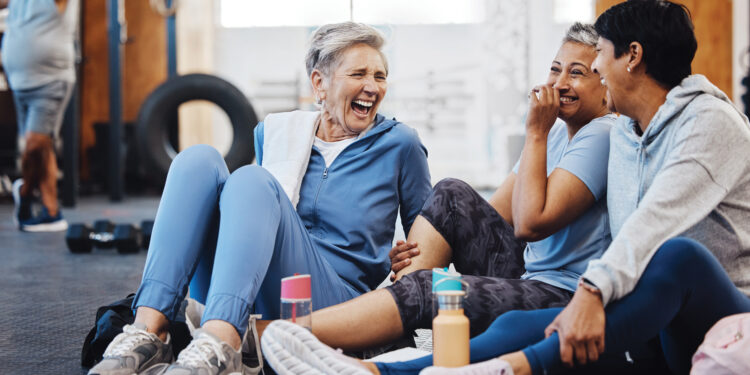Visiting a fitness center can be intimidating. You find yourself surrounded by people years younger than you and wonder about which exercise equipment you can use safely.
However, as the baby boom population ages, more facilities are catering to an older crowd. If you’re ready to sign up for a gym membership, try these tips for managing the physical and social challenges.
Managing the Physical Challenges
Consult your doctor. Speak with your physician before starting an exercise program, especially if you’re overweight or have been sedentary for some time. Your doctor can advise you about any medical conditions you need to keep in mind, such as high blood pressure. If you need more guidance, ask for recommendations for an exercise physiologist or nutritionist.
Check out weight machines. Even frail seniors may be able to strength train with air-powered machines where you just hit a button if the load feels too heavy. Resistance bands are another option. On the other hand, if your balance is strong, you may be able to continue using free weights.
Focus on low-impact aerobics. Protect your joints and adjust for a decreased maximum heart rate. Try swimming and dance classes that keep your feet on the floor. If you’re concerned about falling off the treadmill, look for recumbent machines that offer more stability.
Stretch gently. End each session with gentle movements that build up your flexibility. Extending your range of motion can also help you to live independently longer.
Remain seated if you like. Many exercises can be performed without standing up. Browse online for yoga moves you can do sitting on a gym bench.
Pace yourself. Walking is a great way to start moving, and your first exercise sessions may last only a few minutes. Increase the intensity of your workouts slowly to avoid injury.
Managing the Social Challenges
Sign up for group classes. Maybe your gym schedules custom-designed classes for members over 50. Whatever you find on the program, classes are a convenient way to meet your fellow gym members.
Choose a spot. If you feel conspicuous standing up front, position yourself at the back of the room or off to the side. You can often see the instructor better from a distance.
Talk with the instructors. Qualified trainers will be happy to suggest modifications and substitutions to deal with any medical conditions or injuries you may have. Many seniors are concerned about falls. Ask your instructor to show you exercises that can help you to balance.
Find an exercise partner. Look around for gym members your own age. Workout buddies can watch out for each other and provide motivation.
Invite your friends. Your membership probably includes guest passes and discounts. See if anyone you know would like to join you. You’ll look forward to workouts more when you share them with your friends.
Adjust your schedule. Noisy gyms can be irritating for some seniors. Ask the staff about what hours of the day tend to be less busy. You may want to designate the early morning hours as your regular time.
Arrange your soundtrack. Speaking of noise, you may prefer Chopin to the newer dance songs booming over the loudspeakers. If you’re unable to locate a gym that plays quieter tunes, you may want to wear earplugs or listen to audio books with your ear buds.
By the age of 40, most adults lose 1% or more of their muscle mass each year. Slow down aging with regular exercise. Training at the gym can help you make new friends while you strengthen your body and mind. OL










